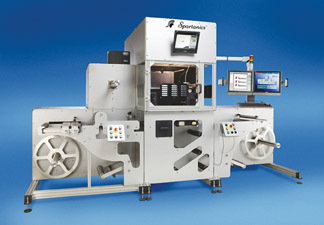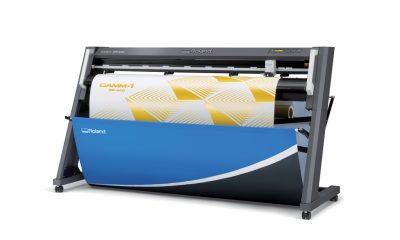All applications come with their share of obstacles to quality and productivity, but few are as challenging as large-format, screen-printed graphics. Difficulty often stems from the size of the image versus the size of the maximum screen size (per press), bringing the image very close to the sides of the frame. This configuration forces the operator to try and adapt the available tools to achieve what’s rarely possibale.
All applications come with their share of obstacles to quality and productivity, but few are as challenging as large-format, screen-printed graphics. Difficulty often stems from the size of the image versus the size of the maximum screen size (per press), bringing the image very close to the sides of the frame. This configuration forces the operator to try and adapt the available tools to achieve what’s rarely possibale. As a result, the squeegee blade has traditionally been used to stretch horizontally in the X-to-Y axes in order to generate force between the squeegee blade and the mesh in the vertical, or Z, axis.
Using the squeegee to create excessive downward pressure can lead to pinching the mesh against the print bed. Once the mesh is pinched, energy will no longer transfer to the midpoint of the blade-mesh interface. Various durometers and blade configurations—triple-durometer blades, for example, are commonly used to compensate for this harmful effect; however, variables such as dot gain, image distortion, and consistency of ink deposit remain serious issues. A blade that’s too hard can rip mesh, while a blade that’s too soft can swell. Streaks may become problematic when the squeegee blade is too sharp, and colors may appear dull when the blade is too dull.
The Similin’ Jack V (SJv) squeegee from Clarke Product Renovation (CPR) is designed to eliminate these roadblocks, increase print speed on press, and reduce ink consumption and wear-and-tear on the squeegee during long production runs.
SJv has a pressure-compensation curve cut into its face. It’s engineered to adapt to the requirements of large-format graphics screen printing and incorporates a variable hinge to build pressure between the blade and mesh first at the center of the screen and then gradually out to the end of the blade. This arrangement is designed to prevent the blade from buckling or pinning under pressure and to minimize dot gain, piling, and streaking. CPR reports that the curve allows SJv to adapt to the tension differential of the screen mesh and notes that SJv typically prints 30-350% faster than conventional squeegee blades.
The company attributes SJv’s performance to what it describes as constant interface pressure from mid-point to edge, relatively low compressive modulus, and high flexural modulus. According to CPR, SJv also offers the following benefits to those who screen print large-format graphics:
• High-speed printing without sticking, piling, or excess gain
• Durable edge, which prevents dot gain and streaks
• Variable hinge, which promotes longer mesh and stencil life
• High tear strength, which prevents chipping
• Low compressive modulus, which minimizes mesh wear
• Minimal footprint, which reduces the frictional drag required for progressive moiré
• High fluid pressure and low pressure drop, which minimize mottling and skipping
• High interface pressure at midpoint, which minimizes dot piling and related streaks
• Resistance to cupping caused by chemical exchange
The squeegee blade has an option for two printing edges: a flat edge for thinner ink deposits, fine details, and dark inks on lighter backgrounds; and a beveled edge for opaque colors, white inks, higher ink density, metallic inks, and special-effect formulations.
SJv is 2 in. (51 mm) tall and is designed to fit all standard squeegee holders without modification. Custom lengths are available. For more information, contact Clarke Product Renovation, 5724 Rosinweed Ln., Naperville, IL 60564, 630-352-3229, info@cprknowsjack.com, www.cprknowsjack.com.

 Art, Ad, or Alchemy2 months ago
Art, Ad, or Alchemy2 months ago
 Case Studies1 month ago
Case Studies1 month ago
 Andy MacDougall2 months ago
Andy MacDougall2 months ago
 Columns2 weeks ago
Columns2 weeks ago
 Editor's Note2 weeks ago
Editor's Note2 weeks ago
 Marshall Atkinson2 weeks ago
Marshall Atkinson2 weeks ago
 Thomas Trimingham2 months ago
Thomas Trimingham2 months ago
 News & Trends1 month ago
News & Trends1 month ago







